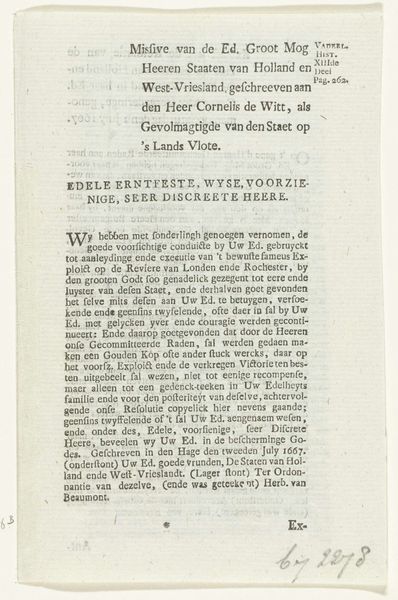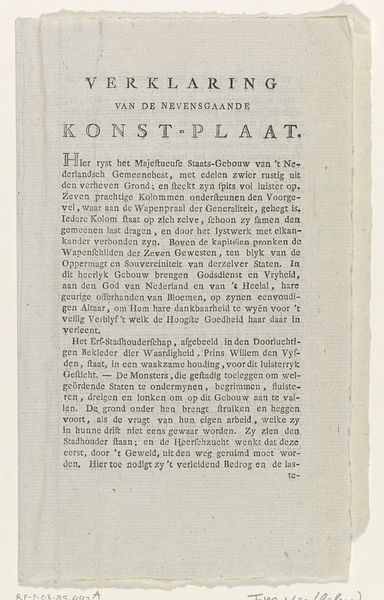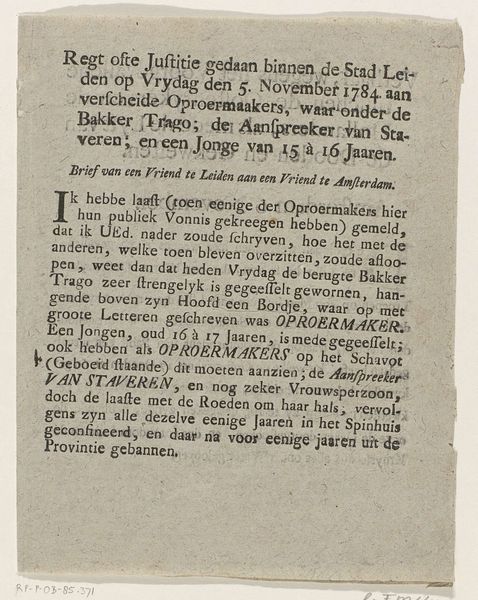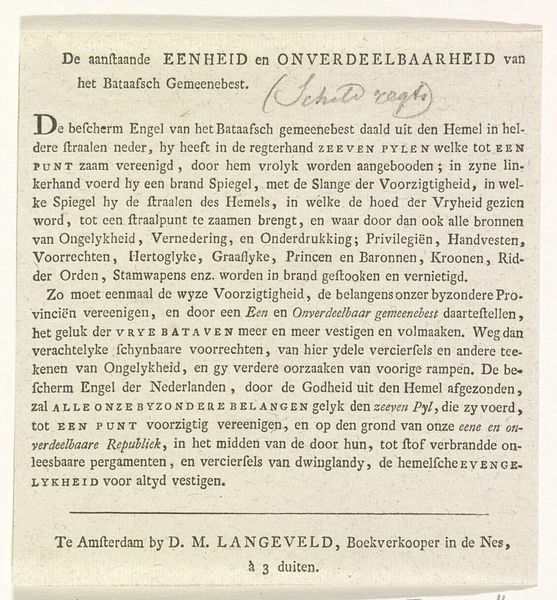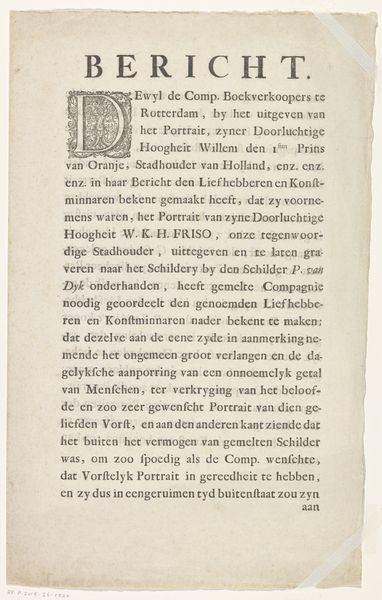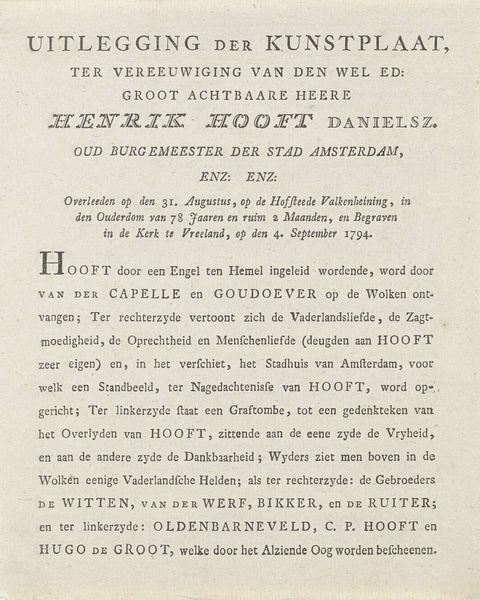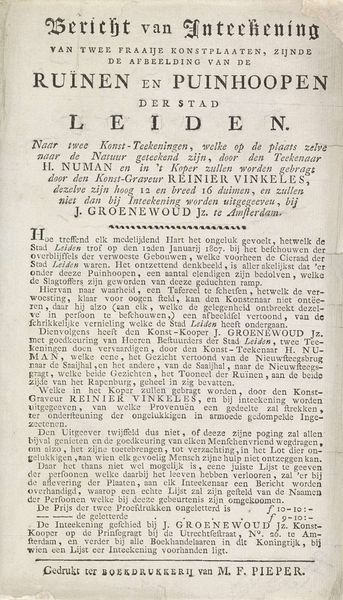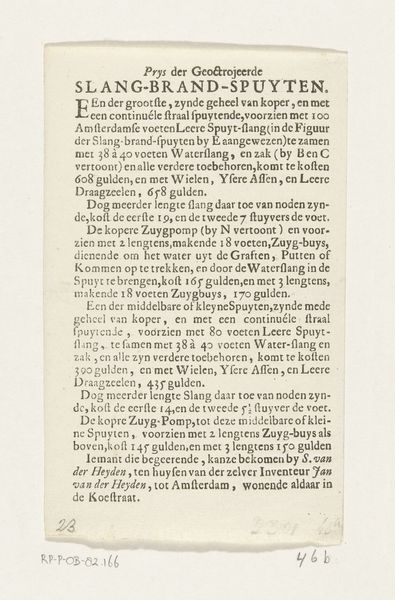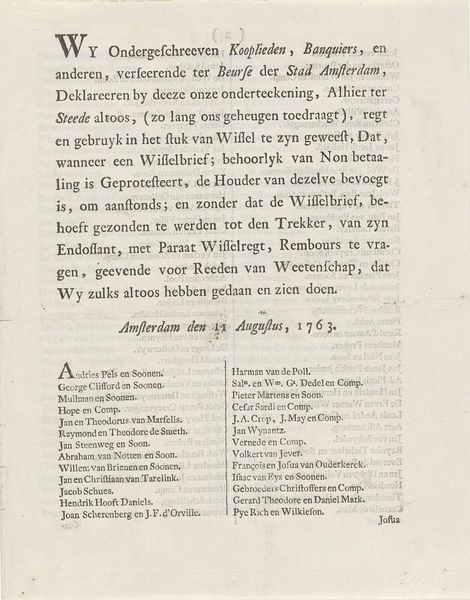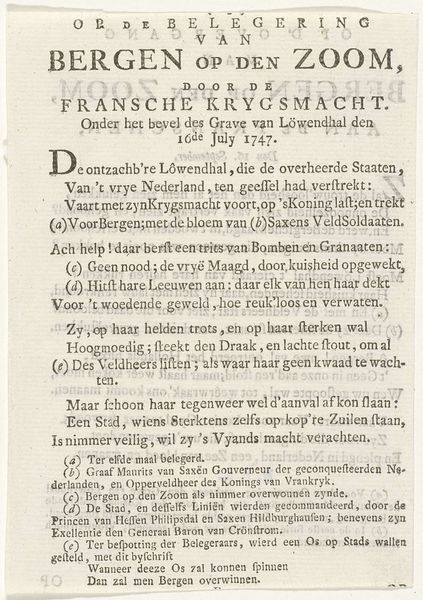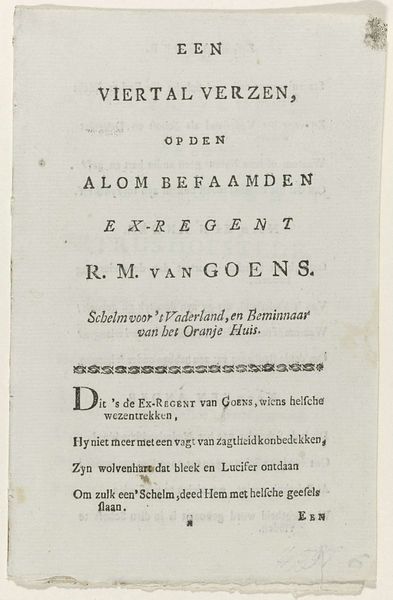
Bericht bij de uitgave van zes portretten van stadhouders en vorsten 1748 - 1751
0:00
0:00
societbibliopolrotterod
Rijksmuseum
print, typography, engraving
#
aged paper
#
dutch-golden-age
# print
#
typeface
#
old engraving style
#
text
#
typography
#
script
#
stylized text
#
thick font
#
handwritten font
#
classical type
#
engraving
#
historical font
#
columned text
Dimensions: height 474 mm, width 666 mm
Copyright: Rijks Museum: Open Domain
Curator: This engraving, titled "Bericht bij de uitgave van zes portretten van stadhouders en vorsten," from 1748-1751, is really striking. Editor: It's basically a printed advertisement, isn't it? It gives off a very formal, almost austere vibe with its tight typography. What is it that stands out to you in this piece? Curator: For me, it's about understanding the context of printmaking in the mid-18th century. Consider this print not just as an advertisement but as a product of specific labor, materials, and a burgeoning book trade. The texture of the paper, the precise lines of the engraving achieved by Pieter Tanjé - these aren’t neutral; they speak to a system of production. How do you think the cost of "25 stuivers" influenced its distribution and consumption? Editor: I see what you mean. It's not just about the image, but about the whole industry that made it possible and accessible. Twenty-five stuivers—that was a calculated price point. Was printmaking considered high art at the time? Curator: That's exactly the question. By examining print as a commodity, we challenge the rigid boundaries of art. The division of labor – the publisher, the engraver, the distributors – each played a role. It makes you question who the 'artist' really is here. What does it tell us about the relationship between art and commerce? Editor: That's fascinating. I hadn't considered it that way, thinking about the labor involved in creating and distributing it. This shifts my focus entirely from aesthetic judgment to the socio-economic context. Curator: Precisely. Analyzing the materials and modes of production reveals a wealth of information, moving beyond just the aesthetic qualities. It really illuminates a specific historical and cultural moment, doesn't it? Editor: Definitely, it makes me look at the material production as meaningful cultural work. Thank you!
Comments
No comments
Be the first to comment and join the conversation on the ultimate creative platform.
